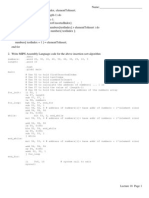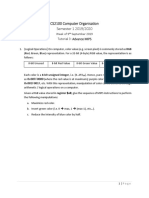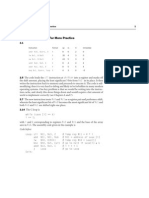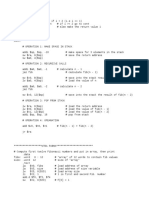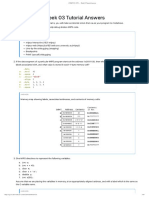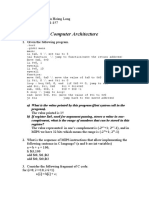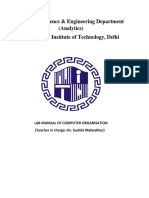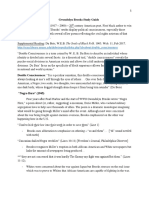0% found this document useful (0 votes)
11 views38 pagesCOS Assignment 5
The document outlines a MIPS programming assignment involving multiple problems, including computing the floor of an integer division by 9 without using division operations, implementing an insertion sort algorithm, finding pairs of integers that sum to a target value, and converting binary strings to decimal. Each problem includes high-level pseudocode, MIPS code, and documentation references. The assignment emphasizes the use of syscalls for input and output, along with specific algorithms for sorting and arithmetic operations.
Uploaded by
kabirvohra2005Copyright
© © All Rights Reserved
We take content rights seriously. If you suspect this is your content, claim it here.
Available Formats
Download as PDF, TXT or read online on Scribd
0% found this document useful (0 votes)
11 views38 pagesCOS Assignment 5
The document outlines a MIPS programming assignment involving multiple problems, including computing the floor of an integer division by 9 without using division operations, implementing an insertion sort algorithm, finding pairs of integers that sum to a target value, and converting binary strings to decimal. Each problem includes high-level pseudocode, MIPS code, and documentation references. The assignment emphasizes the use of syscalls for input and output, along with specific algorithms for sorting and arithmetic operations.
Uploaded by
kabirvohra2005Copyright
© © All Rights Reserved
We take content rights seriously. If you suspect this is your content, claim it here.
Available Formats
Download as PDF, TXT or read online on Scribd
/ 38




